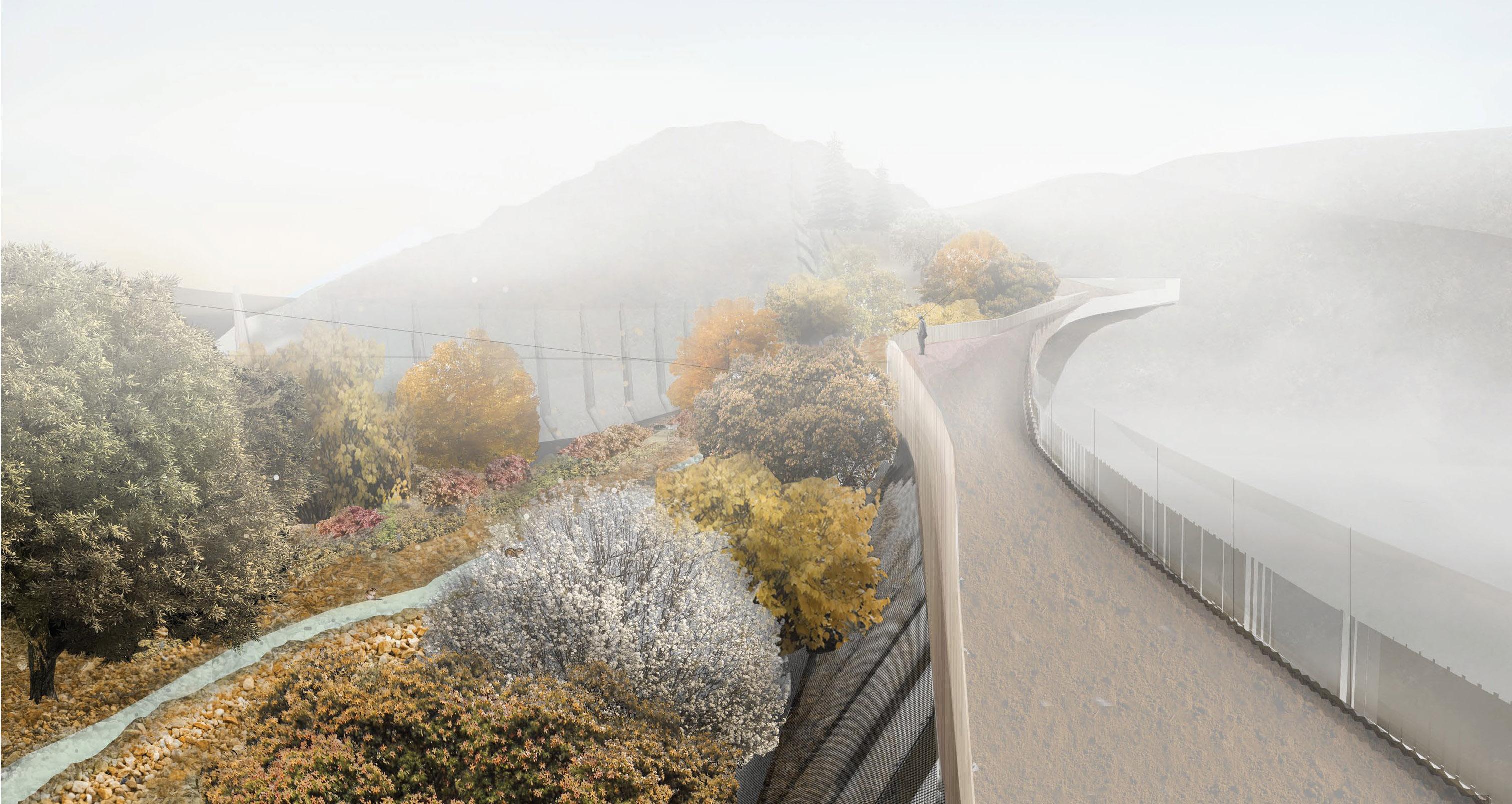A piece of infrastructure that allows people and wild animals to co-exist
Yangjaegogae Eco Bridge
Yangjaegogae Eco-Bridge is designed as a prosthetic landscape between Mt. Umyeon Park and Maljukgeori Park at both sides of Gyeongbu Expressway in Seoul, South Korea. The bridge acts ecologically, programmatically, and formally as an extension of the existing mountains, providing a natural pathway for both animals and humans to reach the other side. The bridge consists of two paths designed respectively for animals and pedestrians . However, the two distinctive paths form a dynamic relationship that enables pedestrians and wild animals to co-exist.
The animal path is designed specifically based on the habitats of local animals including chipmunks, squirrels, and local birds. The path follows the form of the mountain range, so that it carries an undulating landscape surface, completely merged with the existing landscape. Selected local plants are planted along the path with changing height, creating a continuous plant canopy of changing height extended from the existing forests for wild animals to circulate. An artificial stream is also introduced as both attractors for animals and an irrigation device for plants. The new source of food and water attracts animals from two sides of the expressway, encouraging them to meet, interact and mate --- in order to increase biodiversity locally.
The pedestrian path is a comparatively simple lightweight footpath attached to the animal path. It carries a relatively flat surface, which is designed to be pedestrian friendly. The footpath is elevated approximately 2.5m from the animal bridge. Therefore, it creates separation between wild animals and pedestrians while still maintaining some degree of visual connection. A viewing platform is reserved at the middle of the path , where pedestrians can observe animals’ behaviours, enjoy the surrounding mountain views, and appreciate the landscape designed with Korean Garden aesthetics.
The structure of the bridge consists of steel and wood. It demonstrates aesthetics of lightness and intricacy to the surrounding environment, avoiding being heavy and monolithic. The bridge has two different elevations facing north and south - reflecting different qualities of animal and pedestrians’ paths. Being a super-light-structure, the bridge is visually and ecologically integrated to the existing mountains, co-existing with the natural landscape . It demonstrates a new mode of infrastructure that allows human and wild animals to co-exist, allows urban and natural environment to co-exist.
019

